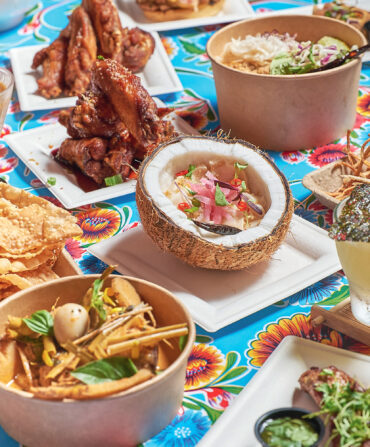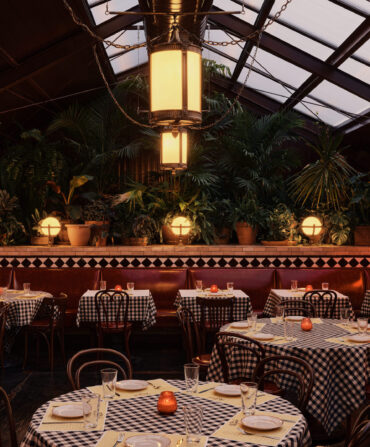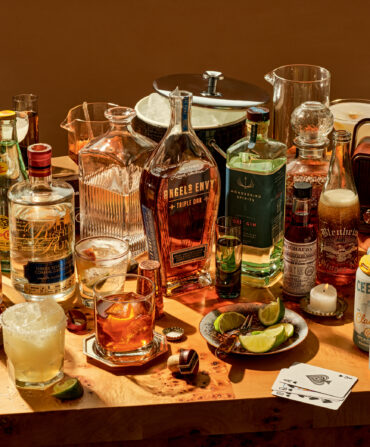Food & Drink
Texas Heat: A Hot Sauce Tour
Got a burning desire for scorching sauce? From Mexican salsa to old-school vinegar-pepper to brand-new international flavors, a spicy tour of Houston restaurants proves hot sauce in the South has never, been, well, hotter
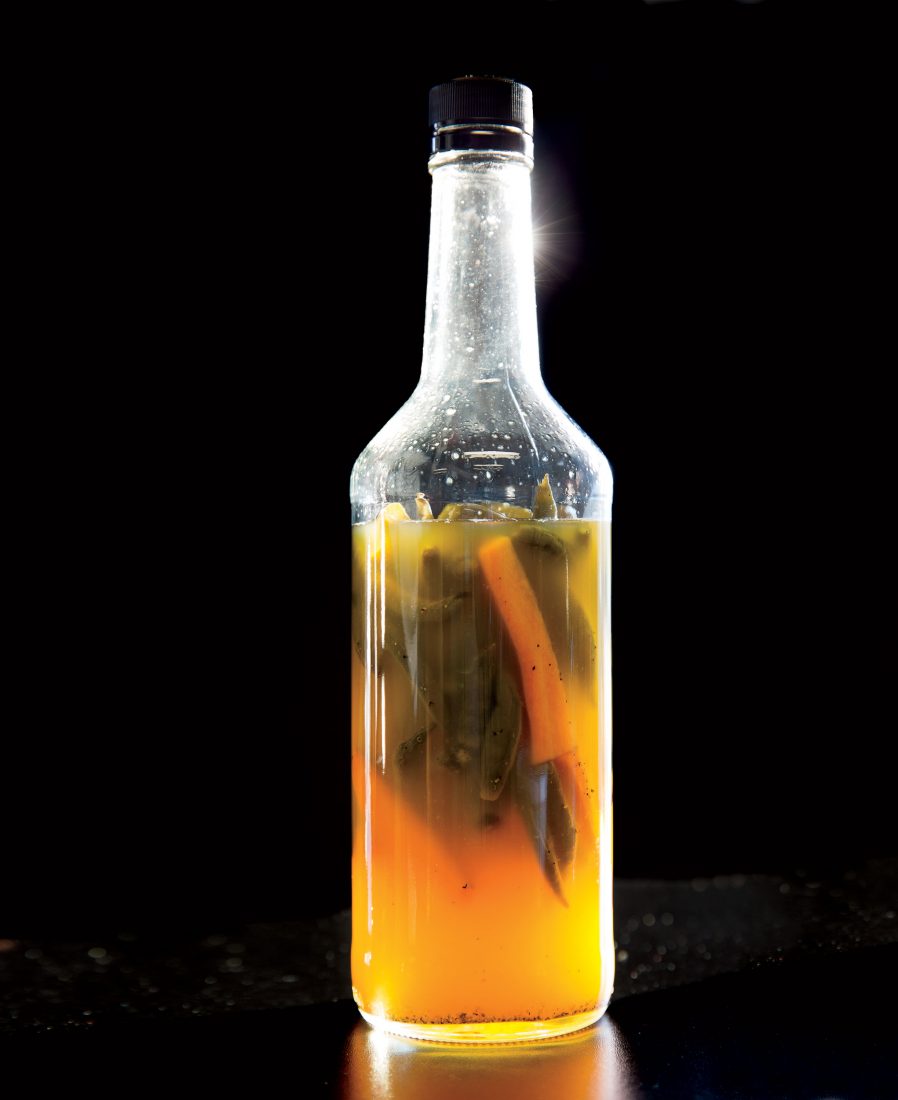
Photo: Peden + Munk
Southerners take hot sauce for granted—until one day we find ourselves in front of a plate of fried eggs in an airport coffee shop in the Maple Syrup Belt with no Tabasco, Texas Pete, or picante sauce to be had. And then we act like junkies going cold turkey.
Don’t be alarmed, but some scientists believe that hot sauce is actually addictive—something to do with the endorphin rush you get when you eat hot peppers. After you get accustomed to the natural painkillers coursing through your brain, eating just isn’t as enjoyable without the burn and buzz.
Thankfully, Southerners have more choices than ever these days to satisfy our hot sauce cravings. Salsa overtook ketchup as the country’s condiment of choice some twenty years ago, and since then the shelves at the supermarket have expanded to include a United Nations of piquant enhancements. I don’t know about you, but my refrigerator door is loaded to capacity with salsa, sambal, Sriracha, gochujang, piri-piri sauce. When we say hot sauce, we aren’t just talking about Tabasco anymore.
There’s no better place to explore this brave new world than in my hometown of Houston. Known for having one of the most multicultural dining scenes in the South, it also has one of the spiciest. A hot sauce tour of H-town restaurants turns up sauces that go back centuries, inter-national flavors, as well as brand-new multiethnic mashups. And thanks to the seemingly endless sprawl of diverse neighborhoods, chileheads never run out of hot new places to discover.
SEEING GREEN
Archaeologists studying the ruins of Monte Albán in Oaxaca have found grinding bowls and the remains of chile peppers and husked green tomatoes from around the time of Christ. There were also curved comals for making crispy tortillas. So it seems people have been eating tortilla chips and some form of spicy green salsa for a little over two thousand years.
Salsa is the Spanish word for sauce, but unlike bottled pepper sauces that contain vinegar as a preservative, Mexican salsas are made fresh and consumed right away. The salsas served with tortilla chips on Tex-Mex tables are typically made with roasted red tomatoes, charred jalapeño peppers, garlic, onions, and lime juice, and they range from mild to superhot. But back in 1973, when Mama Ninfa Laurenzo started putting a bowl of green salsa alongside the bowl of red salsa on the tables of her little tortilla factory dining room in Houston, she upped the ante in the chips and salsa game. Other restaurants started offering a green salsa too to try to keep up, but nobody could come up with one that was quite as good as hers.
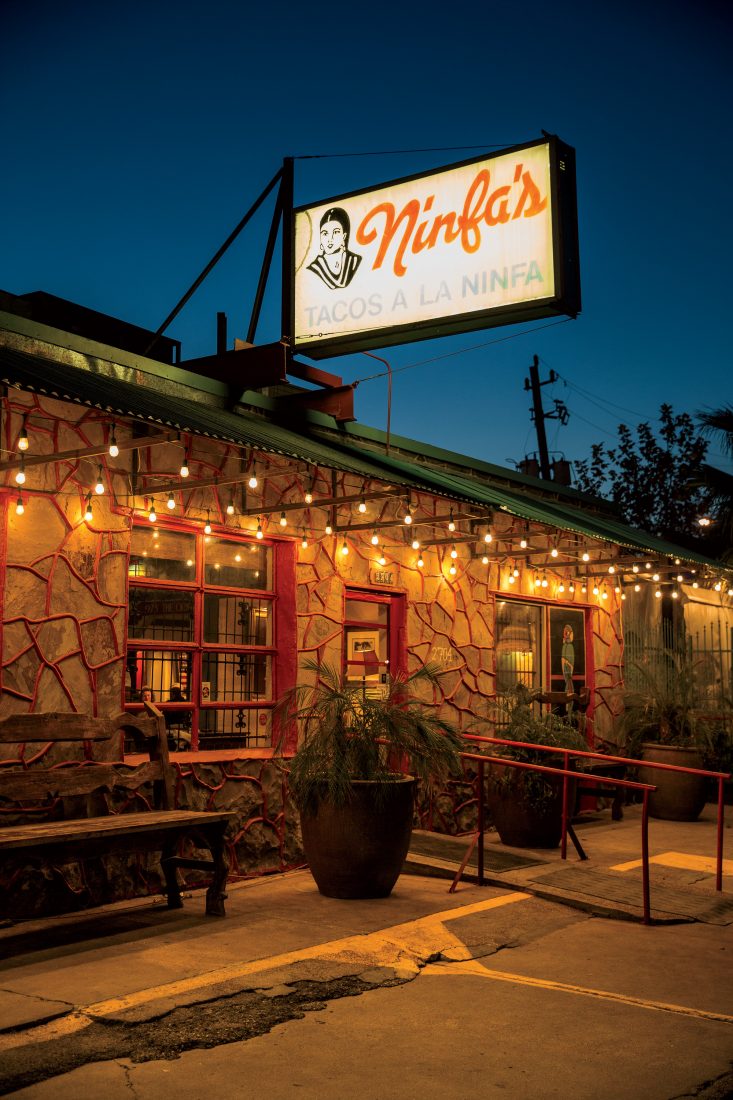
Photo: Peden + Munk
The Original Ninfa’s, founded in 1973.
Mama Ninfa passed away more than a decade ago, but her green salsa remains a staple at the Original Ninfa’s on Navigation—the restaurant goes through some sixty quarts of it every day. Green salsas get their heat from fresh chiles and their tart flavor from green tomatoes or the modern husked green tomatoes called tomatillos. Mama Ninfa added avocados and sour cream to her recipe to create a rich, creamy dip that tastes like a luscious cross between tart green salsa and guacamole.

Photo: Peden + Munk
Ninfa’s chef Alex Padilla.
Ninfa’s is located a little east of downtown, on the street that ends up in front of the waterfront dives along the Houston ship channel. It’s now helmed by chef Alex Padilla, who once worked with James Beard Award winner Nancy Oakes in her California New American cuisine restaurant Boulevard. Padilla admits he has tweaked Mama Ninfa’s recipe a little since he took over. “We use garlic confit now instead of garlic powder,” he says. “And we use roasted tomatillos along with the original green tomatoes to add a little more tartness.” The tomatillos are roasted a day in advance and then chilled overnight. Fresh cilantro and whole jalapeños are among the other ingredients that come together to make the finished product.
Surprisingly, Padilla uses only one whole fresh green jalapeño in the three-liter test batch he whips up for me to taste. “When you use a jalapeño whole, you get heat from the seeds and the pith,” he points out. He’s not kidding. As I drive away, my lips are still burning.
ISLAND FLAVOR
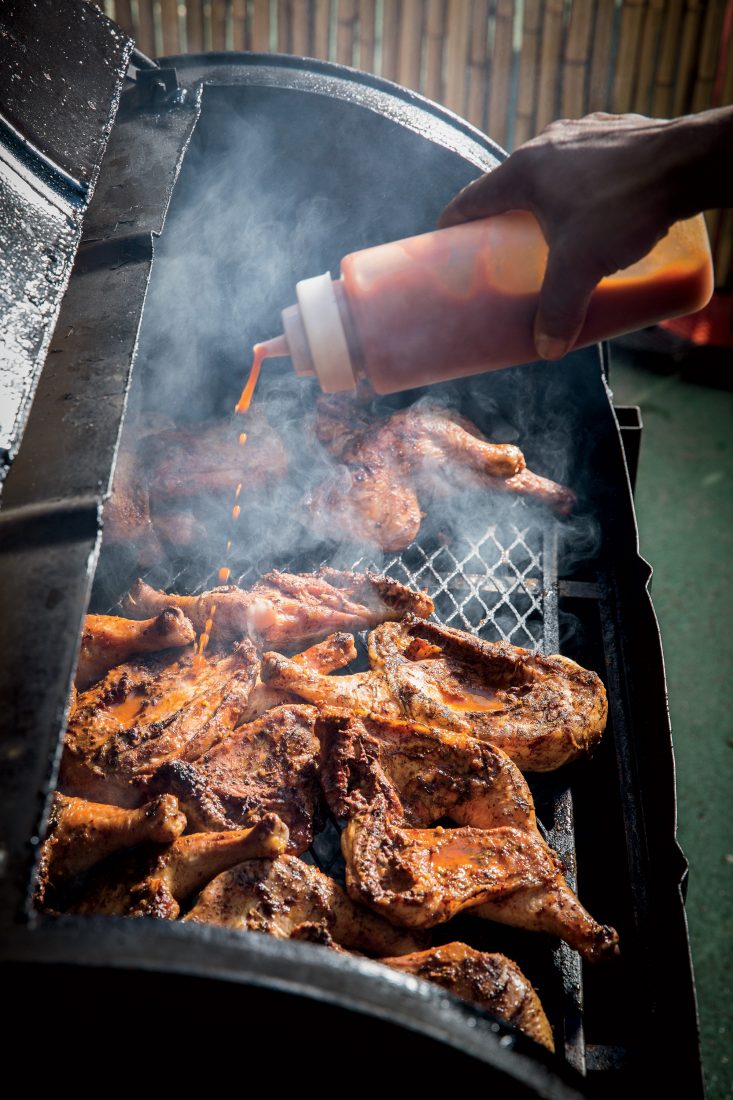
Photo: Peden + Munk
Sizzling chicken gets a douse of Henry’s closely guarded Spicy Jerk Sauce.
By the time I reach the other side of town, in a strip center enclave of Caribbean businesses on Belfort Road, the chile lip balm has worn off, and I’m ready for the next stop on my hot sauce tour—Cool Runnings Jamaican Bar & Grill. The place is easy to spot. It is painted the bright red, yellow, and green of the Rastafarian flag.
The owner, Terron Henry, is a native of Kingston, Jamaica, who has been in Houston for eight years. Henry serves the whole gamut of Jamaican cooking, including curries, patties, escovitch fish, and savory chicken stew. He also makes jerk chicken every day and jerk pork on the weekends.

Photo: Peden + Munk
Caribbean Connection
Owner and Kingston, Jamaica, native Terron Henry.
The Jamaican jerk technique goes back centuries. Henry’s wet jerk paste recipe includes fresh thyme leaves, green onions, fresh ginger, Jamaican Scotch bonnet peppers, allspice berries, and cinnamon and other spices ground up in the blender with garlic and vegetable oil. After marinating the meat in the wet jerk paste, you cook jerk barbecue over charcoal, and the paste forms a crunchy crust. But Henry’s proudest creation is a house-made blend he calls Spicy Jerk Sauce. The recipe is a closely guarded secret, but it tastes like a cross between Jamaican jerk paste and a typical ketchup-based Texas barbecue sauce.
Chilehead that I am, I try to guess the ingredients by gulping down a spoonful of the scorchingly hot liquid. Not a smart idea.
After I chug a tall glass of ice water, Henry explains that the extreme heat comes from the Scotch bonnets, the Caribbean cousin of the hellishly hot habanero. These peppers have a wonderful apricot aroma to go with the heat. Henry’s sauce also has fresh black peppercorns and Jamaican pimento berries (allspice) ground up in it. The fresh ground allspice gives the jerk sauce another kind of spicy flavor, sort of like the cinnamon burn in Red Hots. “Jamaican pimento is my secret ingredient,” Henry confides. “It’s much stronger than the allspice you get at the grocery store.”
THE CLASSIC
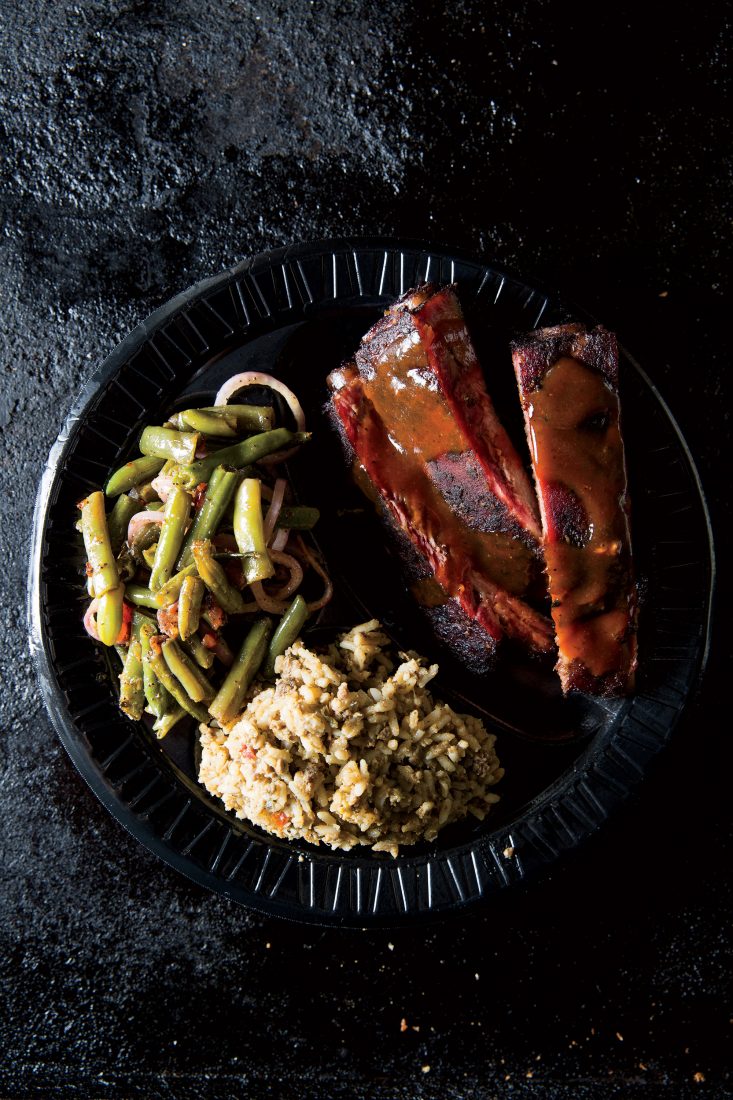
Photo: Peden + Munk
Ribs and sides.
The vinegar barbecue sauces of the Carolinas and the vinegary cayenne sauces of Louisiana are direct descendants of another Caribbean tradition. The Europeans who colonized Jamaica and the other Caribbean islands preserved hot peppers by stuffing them into bottles of Madeira, rum, and vinegar. The ferociously pungent pods turned the liquid in the bottle into one of the earliest pepper sauces.
Vinegar seasoned with chile peppers, black pepper, and salt became the favorite barbecue sauce of the British
colonizers of the United States. A recipe for Pepper Vinegar appears in The Virginia House-wife, the 1824 cookbook written by Mary Randolph. Randolph was related to Thomas Jefferson, who himself grew chile peppers and made his own chile pepper and cider vinegar concoctions at Monticello.
Vinegar-pepper still reigns as the barbecue sauce of choice in the eastern Carolinas and elsewhere. In Houston, you won’t find better than at Gatlin’s BBQ on West 19th Street, located in a tiny house in the Heights, a hipster ghetto of restored bungalows just north of downtown.
 The Gatlin family has ties to Louisiana, and they put a Creole accent on the food. There’s dirty rice as well as potato
The Gatlin family has ties to Louisiana, and they put a Creole accent on the food. There’s dirty rice as well as potato
salad, and bread pudding for dessert. Pit master Greg Gatlin serves the customary Texas trinity—brisket, sausage links, and tender ribs. But he also offers pulled pork from wood-smoked pork butts.
I join Gatlin in the kitchen while he whips up a batch of his vinegar-pepper sauce. Cayenne peppers fermented in a brine solution are pureed with carrots, onions, garlic, and seasonings in the blender. Then the fiery orange mash is mixed with some of the brine and white vinegar and strained through a sieve into a quart-size rum bottle. Whole pickled cayenne peppers and some carrot chunks get stuffed into the bottle before it is put in the refrigerator. The whole cayennes floating in vinegar remind me of the bottles of “sport peppers” you see on the tables of Southern diners.
After a little sample of this tart and hot sauce on a chunk of Gatlin’s juicy pulled pork, I pull out my wallet and demand more. Gatlin obliges, and I again admire the rum bottle full of murky goodness. “It’s hotter than Carolina vinegar sauce and more vinegary than Louisiana pepper sauce,” he says. “Sure tastes good on pork. Boudin too.”
SOUTH BY SOUTH ASIA
The vinegar-pepper combination isn’t just a favorite in the South. Vietnamese nuoc cham is the vineger-pepper sauce of Southeast Asia, and it comes as a dipping sauce for my Vietnamese egg rolls at b10 Vietnamese Café on Westheimer, near the upscale Galleria shopping district.
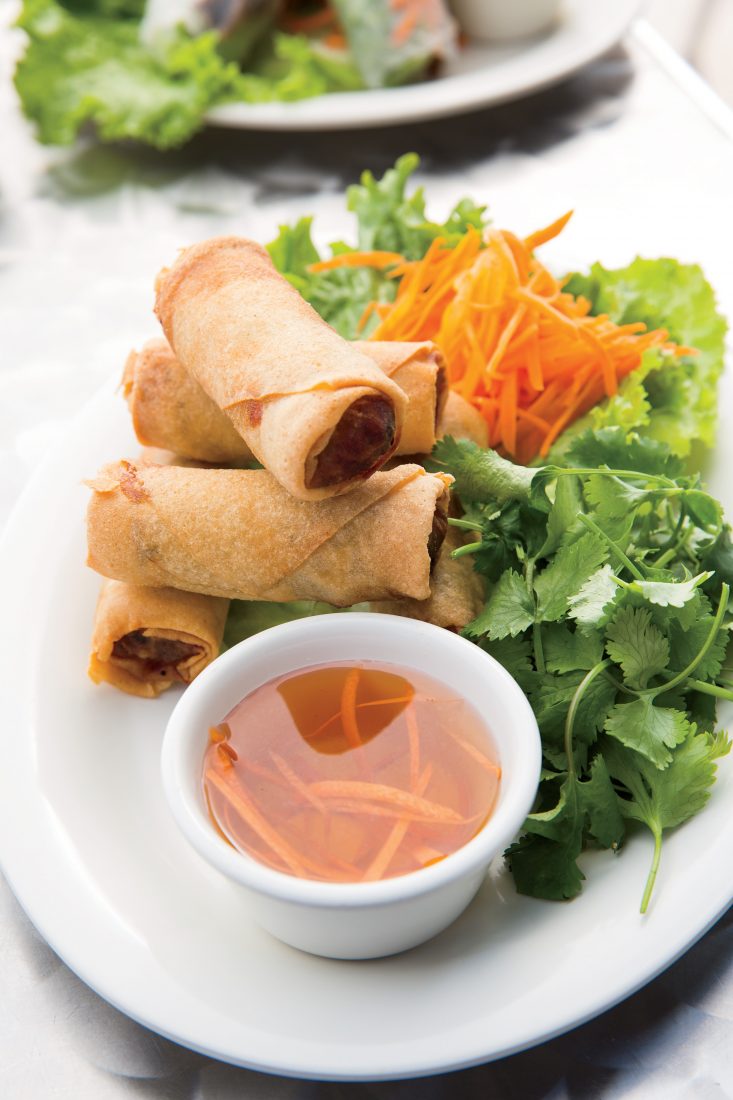
Photo: Peden + Munk
Egg rolls ready for dipping in nuco cham at b10 Vietnamese Cafe.
The peppers are thinly sliced Thai chiles, mixed with rice wine vinegar and a dash of fermented fish sauce. The recipe also calls for some sugar and the Indonesian fermented pepper paste called Sambal Oelek. The concentrated base is thinned with water, and cilantro, mint, chopped peanuts, julienned carrots, and garlic slivers can be added.
The hot egg rolls come on a bed of romaine leaves with cilantro and other herbs—you wrap the hot roll in the cold lettuce leaf with some herbs and dunk the whole package in the nuoc cham. The spicy pepper sauce bites, the funky smell of fish sauce fills your sinuses, and there’s a wild clash of temperatures and textures as you chew. That’s a lot going on in your mouth.
Thuy Tran is a second-generation Vietnamese restaurant owner. Her mother, Thu Ho, runs the original b10 location in the six-square-mile Asian neighborhood informally known as Bellaire Chinatown. Tran is trying to make the Westheimer menu a little less intimidating to non-Vietnamese by offering items like build-your-own sandwiches as well as a banh mi riff on a classic American sloppy joe. She’s also toned down the heat in her sauce. When I tell her that the nuoc cham isn’t hot enough for me, she smiles and says it’s not hot enough for her either. “That’s why we have all these,” she says, pointing to shelves above the condiment counter loaded with Sambal Oelek and Sriracha bottles. Regulars use these to crank up the heat.
THE CHEF FACTOR

Photo: Peden + Munk
Chef Bryan Caswell at Little Bigs.
I can’t help but chuckle upon seeing the same Sriracha bottles on the shelf above the condiment dispensers at Little Bigs, a hip slider shack on Montrose Boulevard. The mini-burgers are awesome, and there’s an excellent wine list. But whatever else I order, I always get the hand-cut and double-cooked french fries, made all the more perfect thanks to a dipping sauce labeled “Remoulade” that you squirt from a giant dispenser into a paper condiment cup—or directly over your paper boat full of fries. The mayonnaise-based dip is a pale orange color and has a mild burn along with a pleasant citrus tang. Just like b10 regulars, Little Big patrons use the Sriracha bottles to make the hot sauce even hotter.
Little Bigs is co-owned by chef Bryan Caswell of the award-winning Houston seafood restaurant Reef. After graduating from the CIA and working for the pioneering Jean-Georges Vongerichten, Caswell came home to Houston and helped to establish its innovative dining scene. At Reef, he calls the dipping sauce “Sriracha-Citrus Remoulade.”
French rémoulade has an accent over the first e and is commonly served with celeriac. Expect to get laughed at if you spell remoulade with an accent mark in Cajun country. Cajun remoulade is typically made by combining mayonnaise, Creole mustard, and cayenne powder or Tabasco sauce. It’s served with french fries and seafood. But Caswell’s recipe is a little more sophisticated than you might imagine. He doesn’t just squirt a little Sriracha into a bowl of Duke’s mayonnaise. He also adds chopped shallots and garlic, minced cilantro, and a blend of lime, orange, and grapefruit juices to this Asian/Cajun mashup. The remoulade was originally served on ground ribeye sliders at Reef. It also tastes great on Caswell’s fried catfish Vietnamese sandwiches.
Caswell grew up eating his mother’s Cajun cooking, but like most Houstonians of his generation, he also considers Indian curry, Southeast Asian fare, and old-school Tex-Mex to be “home food.” The new multicultural combinations in the South are not like those contrived fusion combinations we used to see in the 1990s. For young chefs like Caswell, using Sriracha to supercharge his mom’s Cajun remoulade was simply second nature.
“I was into hot sauces long before I started cooking,” Caswell says. “When I was in high school, I had a hot sauce collection that was a mile long. Now I see kids at Little Bigs using Sriracha like ketchup. We live in a hot sauce culture down here.”



